The Different Fabrics Types Used in Garment Manufacturing

Table of Contents
ToggleIn the world of fashion and garment manufacturing, fabric selection is a crucial aspect that greatly influences the quality, comfort, and appearance of the final product. With a plethora of fabrics available, designers and manufacturers like Arbish Sports must carefully choose the most suitable material for their specific garment. This comprehensive guide will explore the various types of fabrics commonly used in garment manufacturing, highlighting their unique characteristics, applications, and advantages.
I. Natural Fabrics
Natural fibers are derived from plants, animals, and minerals. They offer breathability, comfort, and versatility, making them popular choices in garment manufacturing.
1. Cotton: The Versatile and Timeless Fabric
Cotton, often referred to as the “fabric of our lives,” is a natural fiber that has been an integral part of human civilization for centuries. Its widespread popularity stems from a multitude of desirable qualities that make it a favorite among fashion designers, garment manufacturers, and consumers alike. In this article, we will delve into the fascinating world of cotton, exploring its soft and breathable nature, its ideal suitability for casual wear and summer clothing, its excellent absorbency and ease of dyeing, as well as its occasional susceptibility to wrinkling.
Soft and Breathable: The Comfortable Choice
One of the most cherished attributes of cotton is its softness and breathability. The fibers’ natural structure creates a smooth texture that feels gentle against the skin, making it ideal for crafting garments that provide unrivaled comfort. Whether it’s a crisp cotton shirt for a formal occasion or a cozy cotton t-shirt for lounging at home, this fabric remains a go-to choose for individuals seeking an easy-to-wear and comfortable option.
Ideal for Casual Wear and Summer Clothing
Cotton’s versatility extends to its wide range of applications, with a particular emphasis on casual wear and summer clothing. Its breathability allows air to circulate freely, keeping the body cool in hot and humid weather. From lightweight cotton sundresses to relaxed cotton shorts, this fabric provides a perfect solution for staying comfortable and stylish during scorching summer days. Its ability to absorb moisture also makes it a practical choice for workout apparel, as it helps wick away sweat, keeping the skin dry and comfortable during physical activities.
Absorbent and Easy to Dye: A Canvas for Creativity
Cotton’s absorbent nature enables it to readily soak up dyes, resulting in vibrant and long-lasting colors. For fashion designers, cotton makes an excellent canvas to experiment with various dyeing techniques and create captivating patterns. Consumers, in turn, benefit from a diverse array of colorful and visually appealing cotton garments that suit their individual tastes and preferences.
Prone to Wrinkling: Maintenance Tips and Tricks
While cotton’s list of positive attributes is extensive, it does have one limitation: susceptibility to wrinkling. Due to its natural fibers, cotton garments can develop creases and wrinkles, particularly after washing or extended periods of wear. However, this should not deter anyone from choosing cotton apparel. Proper care and maintenance can help minimize wrinkling. Washing cotton clothing in cold water, using gentle cycles, and promptly removing them from the dryer can significantly reduce wrinkles. Additionally, hanging cotton clothing instead of folding can prevent creases from forming.
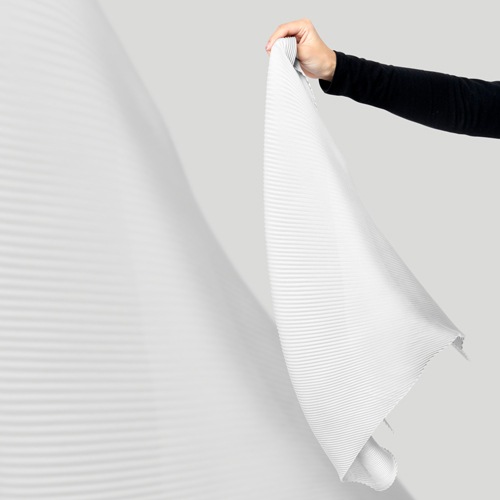
2. Silk: The Epitome of Elegance and Luxury
Silk, often hailed as the “queen of fabrics,” is a luxurious natural fiber renowned for its unparalleled texture and sheen. With a history dating back thousands of years, this exquisite fabric continues to captivate designers and consumers alike. In this article, we will delve into the allure of silk, exploring its luxurious and smooth texture, its natural sheen and vibrant colors, its lightweight and comfortable nature, as well as its sensitivity to sunlight and moisture.
Luxurious and Smooth Texture: A Touch of Opulence
One of the most distinctive features of silk is its sumptuously smooth and soft texture. The fine and delicate fibers of silk give it a luxurious feel, making it a sought-after choice for high-end fashion and special occasions. The sensation of silk against the skin is unlike any other, adding a touch of opulence to every garment made from this exquisite fabric.
Natural Sheen and Vibrant Colors: A Visual Delight
Silk’s natural sheen is undoubtedly one of its most enchanting characteristics. The fabric’s inherent luster imparts an elegant and regal appearance to any outfit crafted from it. Moreover, silk’s ability to absorb and reflect light creates a dynamic interplay of colors, resulting in vibrant hues that seem to come to life. Whether in their natural state or dyed with various shades, silk garments are a visual delight that exudes sophistication and allure.
Lightweight and Comfortable: A Breathable Delight
Despite its luxurious appearance, silk is surprisingly lightweight and airy. This breathability allows air to circulate freely, making silk garments comfortable to wear even in warmer climates. The fabric’s temperature-regulating properties ensure that it keeps the body cool in hot weather and warm in cooler temperatures, providing an ideal balance of comfort throughout the year.
Sensitive to Sunlight and Moisture: Handle with Care
While silk’s allure is undeniable, it does come with some considerations when it comes to maintenance. Silk is sensitive to sunlight, and prolonged exposure can cause the fabric to weaken and fade over time. As such, it is advisable to store silk garments away from direct sunlight and to avoid leaving them in harsh, brightly-lit areas for extended periods.
Silk is also sensitive to moisture, and excessive exposure to water can damage the fabric and lead to discoloration. Dry-cleaning is often the preferred method of cleaning silk garments to ensure their longevity and preserve their luxurious appearance.

3. Wool: Nature’s Gift for Warmth and Durability
Wool, a time-honored natural fiber, has been cherished for generations for its remarkable insulation properties and unmatched resilience. This versatile fabric has found its way into countless garments, from cozy winter sweaters to durable outdoor wear. In this article, we will explore the wonders of wool, delving into its excellent insulation properties, its resilience and durability, its adaptability in various weights for different seasons, and the occasional consideration of itchiness for some individuals.
Excellent Insulation Properties: Warmth Without Bulk
One of the most celebrated qualities of wool is its unparalleled insulation capability. The unique structure of wool fibers traps air, creating pockets of warmth that help regulate body temperature, keeping the wearer cozy in cold weather. This natural insulation allows wool to provide exceptional warmth without the bulk often associated with other winter fabrics. As a result, wool garments are an ideal choice for battling chilly temperatures, making them a staple for winter wardrobes.
Resilient and Durable: A Long-Lasting Investment
Wool’s impressive resilience and durability set it apart from many other fabrics. The inherent strength of wool fibers makes woolen garments resistant to wear and tear, allowing them to withstand the test of time and repeated use. This durability not only ensures that wool clothing lasts for years but also makes it a wise investment for consumers looking for long-lasting and sustainable apparel options.
Available in Various Weights: A Fabric for All Seasons
Contrary to popular belief, wool is not exclusively reserved for cold weather. This versatile fabric comes in a range of weights, making it suitable for all seasons. Lightweight wool is ideal for spring and fall, providing comfort without overheating, while heavier wool garments are perfect for the chill of winter. This adaptability makes wool a fabric for all seasons, catering to the needs of individuals throughout the year.
Can Be Itchy for Some Individuals: Addressing Sensitivity
Despite its many virtues, wool may not be universally beloved due to its potential to cause itchiness in some individuals. Wool fibers have a natural crimp that can irritate sensitive skin, leading to discomfort for certain wearers. However, advancements in wool processing and blending techniques have resulted in softer and less-prone-to-itch fabrics. For those with sensitive skin, selecting garments with a finer grade of wool or opting for wool blends can mitigate this concern while still enjoying the benefits of this exceptional fabric.
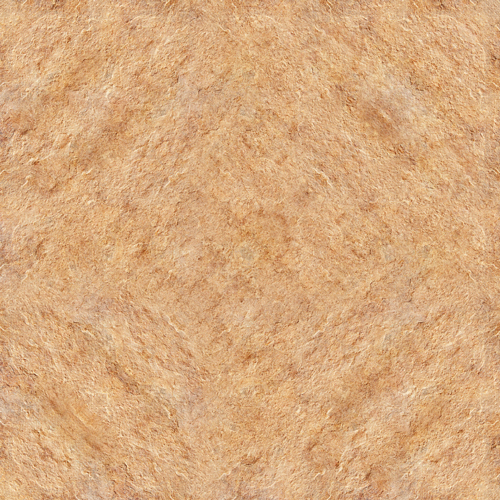
4. Linen: Embracing Nature’s Cool and Effortless Elegance
Linen, a beloved natural fabric with a rich history, has captured the hearts of fashion enthusiasts worldwide for its lightweight and breathable nature. This classic fabric boasts a natural luster and texture that exudes effortless elegance. While being an ideal choice for hot climates, linen’s propensity to wrinkle easily is both a characteristic and a consideration for those who adore this unique textile. In this article, we will explore the many qualities of linen, including its lightweight and breathable nature, its natural luster and texture, its suitability for hot climates, and ways to handle its charming wrinkles.
Lightweight and Breathable: Embracing Comfort
Linen’s appeal lies in its ability to provide unparalleled comfort, thanks to its lightweight and breathable properties. The flax fibers from which linen is derived have a hollow structure, allowing air to circulate freely, keeping the wearer cool even in the hottest weather. Whether it’s a flowy linen dress or a relaxed linen shirt, this fabric is a go-to choose for those seeking comfort without compromising on style.
Natural Luster and Texture: A Timeless Elegance
The natural luster and texture of linen add an air of sophistication and timeless elegance to any garment. Linen’s unique appearance is due to the irregular alignment of its fibers, which create a distinctive visual appeal that sets it apart from other fabrics. Whether in its natural, unbleached state or dyed to various colors, linen radiates an aura of effortless grace that enhances the allure of any clothing item crafted from it.
Suitable for Hot Climates: Embracing the Sun
Linen’s remarkable ability to keep the body cool makes it an ideal choice for hot and humid climates. As temperatures rise, linen’s breathability ensures that the skin remains fresh and comfortable, making it a top pick for summer wardrobes. Linen garments, such as loose-fitting pants and breezy tops, allow wearers to embrace the sun without feeling weighed down by heavy fabrics.
Wrinkles Easily: Embracing Linen’s Character
One aspect that is both adored and acknowledged with linen is its tendency to wrinkle easily. While some may view this as a drawback, others appreciate it as part of linen’s charm. The relaxed and lived-in look that linen acquires with wrinkles gives it a laid-back and casual vibe that resonates with the free-spirited and effortless fashion aesthetic. Embracing linen’s wrinkling nature is a way to appreciate its natural character and unique personality.
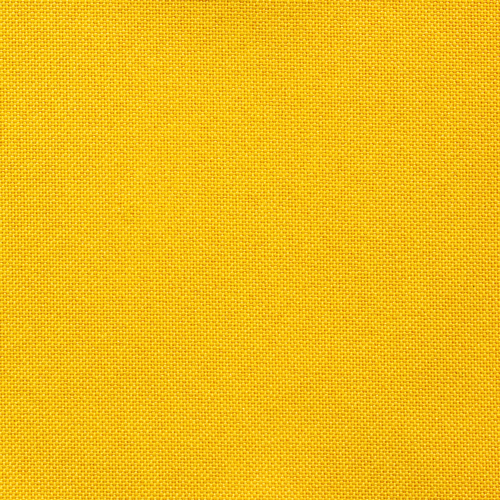
II. Synthetic Fabrics
Synthetic fibers are man-made and engineered to possess specific characteristics, such as durability, elasticity, and resistance to wrinkles.
1. Polyester: The Versatile Synthetic Wonder
Polyester, a synthetic wonder, has revolutionized the world of fabrics with its exceptional strength and durability. This man-made fiber boasts an array of advantageous qualities, including resistance to wrinkles and shrinking, as well as remarkable color retention. However, in the pursuit of its many benefits, it’s essential to consider that polyester may not match the breathability of natural fibers. In this article, we will explore the diverse attributes of polyester, highlighting its strength and durability, its wrinkle and shrink resistance, its color retention capabilities, and the considerations regarding breathability.
Strong and Durable: The Foundation of Reliability
Polyester’s strength and durability are among its most prominent characteristics, setting it apart as a versatile and reliable fabric. The synthetic fibers of polyester are engineered to withstand wear and tear, making it an excellent choice for everyday clothing and garments that experience heavy use. Its robust nature ensures that polyester garments remain in pristine condition even after multiple washes and extensive wear, making it a preferred choice for those seeking long-lasting apparel.
Resistant to Wrinkles and Shrinking: Easy Maintenance
One of the major advantages of polyester is its inherent resistance to wrinkles and shrinking. Unlike natural fibers that can crease easily, polyester garments retain their smooth and crisp appearance even after being stored or packed for extended periods. Additionally, its ability to resist shrinking during washing ensures that polyester clothing maintains its original size and shape, providing convenience and peace of mind to busy individuals.
Retains Color Well: Vibrant and Long-Lasting
Polyester’s remarkable color retention is another compelling reason why it has become a popular choice in the fashion industry. Its synthetic composition allows it to retain dye effectively, resulting in vibrant and long-lasting colors that remain vivid over time. Polyester garments are less likely to fade, ensuring that they maintain their fresh and vibrant appearance, even after repeated washes and exposure to sunlight.
May Not Be as Breathable: Considering Comfort
While polyester boasts numerous benefits, breathability may not be one of its strong points. The synthetic nature of polyester fibers hinders air circulation compared to natural fabrics. This can lead to reduced breathability and increased perspiration, making it less ideal for hot and humid weather. However, advancements in textile technology have led to the development of moisture-wicking and breathable polyester blends, catering to the needs of those seeking both durability and comfort.

2. Nylon: The Durable and Versatile Synthetic
Nylon, a synthetic marvel, has revolutionized the world of fabrics with its exceptional tensile strength and lightweight properties. This man-made fiber boasts a multitude of advantageous qualities, including quick-drying capabilities and suitability for activewear and hosiery. However, it is essential to consider that nylon may be prone to static and pilling, which are occasional considerations for those who appreciate this versatile textile. In this article, we will explore the diverse attributes of nylon, highlighting its high tensile strength, its lightweight and quick-drying nature, its suitability for activewear and hosiery, and the considerations regarding static and pilling.
High Tensile Strength: A Fabric for Durability
Nylon’s exceptional tensile strength sets it apart as a remarkably durable fabric. Its strong and resilient fibers can withstand substantial force and tension, making it an ideal choice for garments that require sturdiness and longevity. This strength is particularly advantageous for clothing that undergoes rigorous activities or must endure constant wear, ensuring that nylon garments remain intact and reliable even under demanding conditions.
Lightweight and Quick-Drying: Embracing Versatility
One of the standout features of nylon is its lightweight nature, making it a popular choice for various applications. Its lightweight feel ensures that nylon clothing is comfortable and easy to wear, allowing individuals to move freely without feeling weighed down. Additionally, nylon’s quick-drying capabilities make it particularly suitable for activewear and outdoor clothing. Whether it’s for intense workouts or adventurous outdoor activities, nylon’s ability to wick away moisture and dry rapidly provides comfort and convenience to active individuals.
Ideal for Activewear and Hosiery: Embracing Performance
Nylon’s versatility extends to its applications in activewear and hosiery. Its durability, combined with its ability to stretch and recover, makes it an excellent choice for active wear, providing support and flexibility during physical activities. Furthermore, nylon’s smooth and lightweight texture makes it a preferred material for hosiery, ensuring a comfortable fit and a polished appearance for various occasions.
Prone to Static and Pilling: Considering Maintenance
While nylon offers numerous benefits, it may be susceptible to static and pilling. Static can cause nylon garments to cling to the body, leading to discomfort and inconvenience. However, using fabric softeners or anti-static sprays can help reduce static buildup. Additionally, nylon fibers may be prone to pilling, where small balls of fuzz form on the fabric’s surface due to friction. Proper care, such as turning garments inside out during washing and avoiding harsh fabrics, can help minimize pilling and preserve nylon’s sleek appearance.
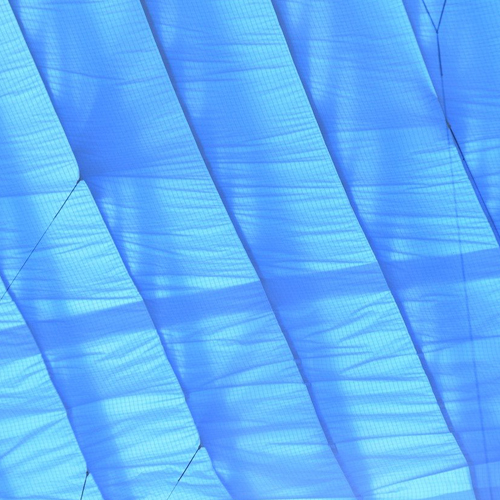
3. Spandex (Lycra or Elastane): Embracing the Power of Stretch
Spandex, also known as Lycra or Elastane, is a remarkable synthetic fiber that has transformed the world of clothing with its exceptional elasticity. This unique material provides unparalleled stretch and recovery, making it a favorite choice for various garments. Additionally, spandex is often blended with other fabrics to enhance comfort and performance. However, it is crucial to consider that spandex is susceptible to degradation from sun exposure. In this article, we will explore the fascinating characteristics of spandex, including its exceptional elasticity, its ability to provide stretch and recovery, its use in fabric blends for added comfort, and the considerations regarding its sensitivity to sun exposure.
Exceptional Elasticity: Stretching the Boundaries
One of the standout features of spandex is its extraordinary elasticity. The fibers are engineered to stretch significantly without losing their original shape. This remarkable stretchability allows garments made from spandex to conform perfectly to the body, providing a snug and comfortable fit. The elasticity of spandex enables clothing to move with the wearer, making it an ideal choice for activewear, dancewear, and garments that require unrestricted movement.
Provides Stretch and Recovery: A Return to Form
Spandex not only stretches but also exhibits excellent recovery properties. After being stretched, the fibers quickly revert to their original shape without losing elasticity. This ability to recover ensures that spandex garments maintain their shape and fit, even after repeated use and stretching. This resilience is particularly advantageous for clothing items that require a reliable and form-fitting silhouette.
Blended with Other Fabrics: Elevating Comfort and Performance
Spandex is often blended with other fabrics to create materials that offer enhanced comfort and performance. The addition of spandex to fabrics such as cotton, polyester, or nylon imbues them with stretchability, improving the garment’s flexibility and ease of movement. This blending allows designers to combine the best qualities of various materials, resulting in clothing that is not only comfortable but also durable and versatile.
Susceptible to Degradation from Sun Exposure: Handle with Care
While spandex boasts numerous advantages, it is important to handle this fabric with care, particularly when it comes to sun exposure. Prolonged exposure to ultraviolet (UV) rays can lead to spandex degradation, causing it to lose its elasticity and become brittle. To prolong the lifespan of spandex garments, it is advisable to avoid extended sun exposure and to protect them from UV rays, especially during outdoor activities.

4. Rayon (Viscose): The Versatile Semi-Synthetic
Rayon, also known as viscose, is a versatile semi-synthetic fabric that has earned popularity for its softness and elegant drape. This unique material is often used as a substitute for silk, offering a luxurious feel at a more affordable price. However, it is essential to consider that rayon can be prone to shrinking and wrinkling, requiring proper care during laundering. In this article, we will explore the fascinating characteristics of rayon, including its softness and draping properties, its role as a silk alternative, its susceptibility to shrinking and wrinkling, and its semi-synthetic nature, derived from wood pulp.
Soft and Drapes Well: A Silken Sensation
One of the most celebrated features of rayon is its exceptional softness and elegant drape. Rayon fibers have a smooth and fine texture, creating a fabric that feels luxurious against the skin. The way rayon drapes gracefully around the body adds a touch of sophistication to any garment made from this material, making it an attractive choice for flowing dresses, skirts, and blouses.
Often Used as a Substitute for Silk: Affordable Elegance
Rayon’s softness and draping qualities make it a popular substitute for silk. While silk is prized for its luxurious texture and sheen, it can be expensive and may require more delicate care. Rayon offers a more affordable alternative, providing a similar silky sensation without the higher price tag. This accessibility makes rayon a favorite choice for those seeking elegance and comfort in their clothing, without compromising on style.
Can Shrink and Wrinkle Easily: Handling with Care
While rayon boasts numerous virtues, it does come with a couple of considerations during maintenance. Rayon is susceptible to shrinking when exposed to heat, particularly during washing and drying. To avoid shrinkage, it is crucial to follow the care instructions provided by the manufacturer and opt for gentle washing and low heat drying. Additionally, rayon is prone to wrinkling, particularly when left folded for extended periods. However, steaming or ironing the fabric on a low heat setting can easily remove wrinkles and restore its smooth appearance.
Semi-Synthetic, Derived from Wood Pulp: A Sustainable Blend
Rayon is categorized as a semi-synthetic fabric because it is made from natural raw materials, specifically wood pulp. The wood pulp undergoes a chemical process to produce rayon fibers. This blend of natural and synthetic elements makes rayon a more sustainable choice compared to fully synthetic fabrics. However, it is essential to consider the environmental impact of the chemicals used during the manufacturing process.
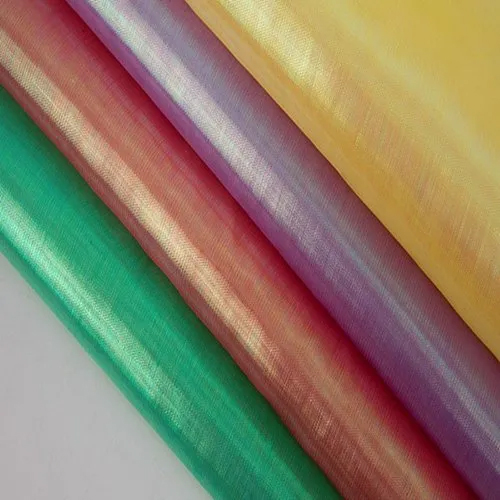
III. Blended Fabrics
Blending different fibers allows manufacturers to combine the best properties of each fabric, resulting in improved durability, comfort, and performance.
1. Poly-cotton: The Perfect Blend of Comfort and Durability
Poly-cotton, a harmonious combination of polyester and cotton, has emerged as a popular fabric choice, fusing the best qualities of both materials. This blend offers a unique balance, combining breathability with wrinkle resistance, making it an ideal option for various applications. Poly-cotton is widely embraced in the realms of casual wear and bedding, showcasing its versatility and practicality. In this article, we will explore the wonderful characteristics of poly-cotton, including its composition, its ability to harmonize breathability and wrinkle resistance, and its ubiquitous presence in the worlds of casual fashion and bed linens.
Mixture of Polyester and Cotton: The Best of Both Worlds
Poly-cotton is a fabric crafted from a blend of polyester and cotton fibers. By combining these two materials, designers can harness the desirable properties of each, creating a textile that offers exceptional comfort and durability. The blend is typically composed of more cotton than polyester, allowing the fabric to retain the breathability and softness of cotton while benefiting from the enhanced wrinkle resistance and strength of polyester.
Combines Breathability with Wrinkle Resistance: A Winning Duo
One of the most outstanding aspects of poly-cotton is its ability to harmonize breathability and wrinkle resistance, striking a balance that many individuals seek in their clothing and home textiles. The cotton component allows air to flow freely through the fabric, making poly-cotton garments and linens comfortable to wear and sleep in, especially during warmer weather. On the other hand, the polyester element endows the fabric with increased resistance to wrinkles, ensuring that poly-cotton items maintain a neat and presentable appearance, even after being packed or stored for extended periods.
Widely Used in Casual Wear and Beddings: Versatility at Its Finest
The versatility of poly-cotton has contributed to its widespread popularity in both the world of casual fashion and home textiles. In the realm of casual wear, poly-cotton is frequently used to create everyday clothing items, such as t-shirts, shorts, and dresses. Its breathability ensures comfort during daily activities, while its wrinkle resistance allows wearers to maintain a polished look with minimal effort. In the domain of bed linens, poly-cotton is favored for its softness and breathability, making it a popular choice for sheets, pillowcases, and duvet covers. The blend’s durability ensures that bedding retains their appeal, even after multiple washes.

2. Wool-Silk: Where Warmth Meets Luxury
Wool-Silk, a magnificent fabric that combines the warmth of wool with the opulence of silk, stands as a testament to the art of textile blending. This exquisite fusion results in a fabric that is not only sumptuously soft and luxurious but also offers a unique texture and drape that sets it apart. Renowned for its sophistication and elegance, Wool-Silk is particularly suitable for high-end formal wear, creating garments that exude timeless charm and allure. In this article, we will delve into the captivating qualities of Wool-Silk, exploring how it marries warmth with luxury, its ideal suitability for high-end formal wear, and the unique texture and drape it imparts to garments.
Blending Warmth with Luxury: A Match Made in Textile Heaven
The marriage of wool and silk in Wool-Silk fabric creates an unparalleled combination of warmth and luxury. Wool contributes its inherent insulating properties, ensuring that garments made from Wool-Silk keep the wearer comfortably warm even in cooler temperatures. At the same time, silk brings its lustrous sheen and sensuous feel, endowing Wool-Silk with a touch of indulgence that elevates the fabric to a level of refined elegance.
Suitable for High-End Formal Wear: A Symphony of Sophistication
Wool-Silk’s regal attributes make it highly suitable for crafting high-end formal wear. From tailored suits and evening gowns to elegant coats and jackets, this fabric lends an air of sophistication and grace to any ensemble. The combination of wool’s practicality and silk’s opulence makes Wool-Silk a top choice for special occasions and formal events, where attire must strike the perfect balance between warmth, luxury, and style.
Provides a Unique Texture and Drape: Embracing Artistry
One of the distinctive qualities of Wool-Silk is the unique texture and drape it imparts to garments. The blend of wool and silk fibers results in a fabric that possesses a fascinating tactile appeal, inviting touch and admiration. The drape of Wool-Silk is graceful and fluid, allowing garments to move effortlessly with the body, creating an aura of refined elegance that captivates onlookers.
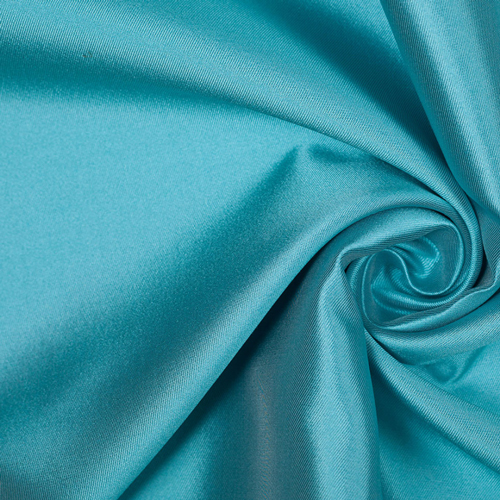
3. Cotton-Linen: Embracing the Best of Both Worlds
Cotton-Linen, a harmonious fusion of cotton and linen, presents a fabric that marries the softness of cotton with the crispness of linen, resulting in a textile that offers a delightful blend of qualities. This unique combination provides enhanced breathability and texture, making Cotton-Linen an ideal choice for crafting summer apparel. In this article, we will delve into the captivating features of Cotton-Linen, exploring how it merges the softness and crispness of both fabrics, its ability to offer enhanced breathability and texture, and its perfect suitability for creating stylish and comfortable summer clothing.
Merging Softness with Crispness: A Textile Symphony
The combination of cotton and linen in Cotton-Linen fabric creates a harmonious symphony of textures. Cotton contributes its inherent softness and smoothness, while linen brings its crisp and slightly textured feel. The result is a fabric that embodies the best of both worlds, enveloping the wearer in a gentle embrace of softness, while simultaneously exuding a fresh and crisp aura that adds a touch of sophistication.
Enhanced Breathability and Texture: A Summer’s Delight
One of the standout qualities of Cotton-Linen is its exceptional breathability, making it a perfect fabric choice for summer apparel. The natural fibers of both cotton and linen allow air to circulate freely through the fabric, keeping the body cool and comfortable in hot and humid weather. This enhanced breathability makes Cotton-Linen garments a refreshing delight to wear during scorching summer days, offering respite from the heat.
Moreover, the texture of Cotton-Linen adds visual interest to clothing items, as well as a unique tactile appeal. The combination of cotton’s softness with linen’s crispness creates a fabric that drapes gracefully and feels comfortable against the skin. This delightful texture makes Cotton-Linen garments both stylish and pleasing to wear, elevating summer fashion to new levels of comfort and sophistication.
Ideal for Summer Apparel: Fashionable and Functional
Cotton-Linen’s ability to offer enhanced breathability and texture makes it a natural choice for crafting summer apparel. From breezy sundresses and lightweight shirts to relaxed shorts and skirts, Cotton-Linen garments effortlessly embody the essence of summer style. The fabric’s practicality, combined with its natural elegance, allows individuals to enjoy the best of both worlds in their summer wardrobe.

IV. Specialty Fabrics
These fabrics are specifically engineered to meet particular requirements, such as performance, protection, or eco-friendliness.
1. Gore-Tex: The Ultimate in Weatherproof Performance
Gore-Tex, a revolutionary and highly advanced fabric, has redefined the world of outdoor and performance wear. Developed by W. L. Gore & Associates, Gore-Tex is renowned for its exceptionally weatherproof properties, offering unparalleled protection against the elements. This innovative fabric has become synonymous with high-performance outdoor gear, providing wearers with comfort, breathability, and waterproof capabilities in a wide range of conditions. In this article, we will explore the remarkable features of Gore-Tex, including its weatherproof performance, its versatility in outdoor and performance wear, and the technological advancements that have made it an essential component in modern outdoor gear.
Weatherproof Performance: Unyielding Protection
The standout quality of Gore-Tex lies in its remarkable weatherproof performance. This fabric is engineered with a microporous membrane that allows air to pass through while effectively blocking external moisture. This breathability ensures that wearers stay comfortable by preventing heat and sweat buildup, even during intense physical activities.
Gore-Tex’s waterproof capabilities are equally impressive. The membrane’s micro-pores are small enough to repel liquid water, preventing rain and snow from penetrating the fabric. This waterproofing ensures that outdoor enthusiasts remain dry and protected, even in the most challenging weather conditions.
Versatility in Outdoor and Performance Wear: From Mountains to Cities
Gore-Tex’s versatility has made it a go-to choose for various outdoor and performance wear applications. From high-altitude mountaineering jackets to everyday city raincoats, Gore-Tex seamlessly adapts to the needs of diverse environments. Its ability to offer weatherproof protection without sacrificing breathability makes it an invaluable asset for hikers, mountaineers, skiers, cyclists, and anyone venturing into the great outdoors.
Beyond outdoor gear, Gore-Tex is also used in sports apparel, shoes, and gloves, ensuring athletes can perform at their best without being hindered by weather conditions. Additionally, it has found its way into everyday garments, providing urban dwellers with stylish and functional outerwear that can handle unexpected downpours with ease.
Technological Advancements: Evolving for Excellence
The development of Gore-Tex has been a result of constant innovation and technological advancements. Over the years, Gore-Tex has evolved to cater to specific needs, with variations designed for different activities and climates. From lightweight and packable shells for hiking to durable and insulated garments for extreme cold, Gore-Tex continues to push the boundaries of outdoor performance wear.
Gore-Tex’s commitment to sustainability and eco-friendly practices has led to the introduction of more environmentally conscious versions of the fabric. These advancements not only enhance the fabric’s weatherproof properties but also reduce its impact on the environment, aligning with the increasing demand for sustainable outdoor gear.
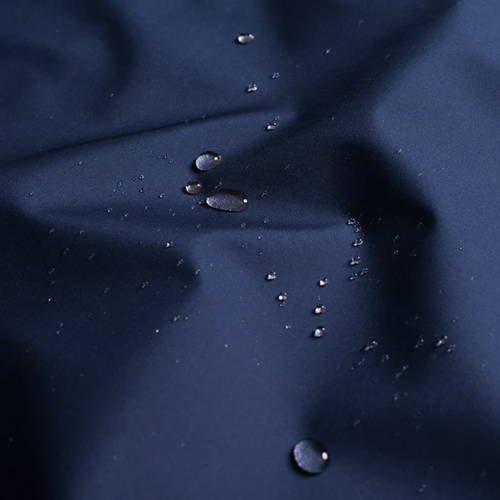
2. Bamboo: A Sustainable Marvel for Comfort and Eco-Friendliness
Bamboo, a versatile and sustainable plant, has emerged as a remarkable fabric choice that embodies eco-friendliness, comfort, and numerous other exceptional qualities. As a textile, bamboo offers a plethora of benefits, making it a preferred option for environmentally conscious consumers. From its sustainable growth to its natural antibacterial properties and hypoallergenic nature, bamboo fabric stands as a true marvel. In this article, we will explore the captivating features of bamboo, including its sustainability and eco-friendliness, its natural antibacterial and hypoallergenic properties, and its innate softness and comfort.
Sustainable and Eco-Friendly: A Renewable Wonder
One of the most celebrated aspects of bamboo fabric is its sustainable and eco-friendly nature. Bamboo is a fast-growing plant that requires minimal water and no pesticides for cultivation, making it a highly renewable resource. Its rapid growth rate allows it to be harvested quickly, without causing damage to the environment. Additionally, bamboo releases more oxygen into the air and absorbs more carbon dioxide compared to trees, further contributing to its eco-friendly status. Choosing bamboo fabric supports sustainable practices and reduces the environmental impact of clothing production.
Naturally Antibacterial and Hypoallergenic: A Clean and Gentle Touch
Bamboo fabric possesses natural antibacterial properties, making it an ideal choice for clothing and linens. The bamboo plant contains a substance called “Bamboo-Kun,” which has antimicrobial and antibacterial qualities that naturally repel bacteria and other microorganisms. This attribute helps keep bamboo garments fresher and odor-free for longer periods, even during prolonged use.
In addition to its antibacterial properties, bamboo fabric is hypoallergenic. It is gentle on sensitive skin and less likely to cause allergic reactions, making it an excellent option for individuals with skin sensitivities or allergies to other fabrics. The natural hypoallergenic nature of bamboo fabric ensures a comfortable and soothing experience for wearers.
Soft and Comfortable to Wear: A Luxurious Touch
Beyond its eco-friendliness and health-conscious properties, bamboo fabric is incredibly soft and comfortable to wear. The fibers are naturally round and smooth, creating a fabric that feels gentle against the skin. Bamboo fabric is also highly breathable, allowing air to circulate and regulate body temperature, keeping the wearer cool in hot weather and warm in colder climates. Its luxurious touch and comfort make bamboo garments a preferred choice for both everyday wear and special occasions.

3. Microfiber: The Ultra-Fine Wonder for Activewear and Cleaning
Microfiber, a marvel of modern textile technology, has revolutionized the world of activewear and cleaning cloths with its ultra-fine synthetic fibers. This fabric is prized for its softness, lightweight nature, and exceptional performance in various applications. As a key player in the realm of activewear and cleaning, microfiber fabric offers a perfect balance of comfort and functionality. In this article, we will delve into the captivating features of microfiber, including its ultra-fine synthetic fibers, its softness and lightweight feel, and its widespread use in activewear and cleaning cloths.
Ultra-Fine Synthetic Fibers: Precision Engineering
At the core of microfiber lies its ultra-fine synthetic fibers, meticulously engineered for optimal performance. The fibers are significantly finer than traditional fabrics, with diameters often measured in micrometers. This precision engineering results in a fabric that is finer than a human hair, giving microfiber its characteristic smoothness and unique properties.
Soft and Lightweight: A Gentle Touch
Microfiber fabric is celebrated for its soft and lightweight feel against the skin. The ultra-fine fibers create a surface that is smooth and gentle, making microfiber garments exceptionally comfortable to wear. The lightweight nature of microfiber adds to the wearer’s ease of movement, making it an excellent choice for active wear where mobility and comfort are paramount.
Used in Activewear: Unleashing Performance
Microfiber’s softness and lightweight properties have made it a sought-after fabric in the realm of activewear. Whether it’s athletic shirts, shorts, or leggings, microfiber garments provide wearers with a comfortable and unrestricted experience during workouts and physical activities. The fabric’s moisture-wicking capabilities help draw sweat away from the body, keeping athletes dry and cool even during intense exercise.
Microfiber’s smooth surface also reduces friction, preventing chafing and irritation during movement. Its quick-drying nature further enhances its appeal in active wear, allowing for rapid moisture evaporation after exercise.
Used in Cleaning Cloths: A Revolution in Cleaning
Microfiber’s exceptional cleaning capabilities have revolutionized the cleaning industry. The ultra-fine fibers have a high density, creating an intricate network that effectively traps and lifts dirt, dust, and debris from surfaces. This makes microfiber cleaning cloths highly effective for both dry dusting and wet cleaning.
In addition to their impressive cleaning power, microfiber cloths are also gentle on delicate surfaces, making them ideal for use on electronics, glasses, and other sensitive items. The ability of microfiber to clean effectively without the need for harsh chemicals contributes to its eco-friendliness and environmental impact.

V. Sustainable Fabrics
As sustainability becomes a prominent concern, several eco-friendly fabrics have emerged in the garment manufacturing industry.
1. Organic Cotton: Embracing Nature’s Purity
Organic cotton, a pure and environmentally friendly alternative to conventional cotton, has emerged as a beacon of sustainable and ethical textile practices. Grown without harmful chemicals or pesticides, organic cotton embodies nature’s purity and offers a multitude of benefits. From being hypoallergenic and gentle on the skin to supporting sustainable agriculture, organic cotton stands as a powerful advocate for conscious and responsible consumption. In this article, we will explore the captivating qualities of organic cotton, including its growth without harmful chemicals, its environmentally friendly and hypoallergenic attributes, and its contribution to supporting sustainable agriculture.
Grown Without Harmful Chemicals or Pesticides: Nurturing Nature’s Balance
One of the most profound characteristics of organic cotton is its growth without the use of harmful chemicals or pesticides. Organic cotton farmers follow stringent guidelines that prioritize environmental preservation and the health of both consumers and farmworkers. The absence of synthetic pesticides and chemical fertilizers not only protects the natural ecosystem but also ensures that the soil remains fertile and resilient for future crops.
Choosing organic cotton over conventionally grown cotton reduces the exposure to toxic chemicals for farmworkers, local communities, and the wider environment. This commitment to cultivating cotton without the use of harmful chemicals nurtures nature’s delicate balance, promoting biodiversity and safeguarding essential natural resources.
Environmentally Friendly and Hypoallergenic: Embracing Gentle Comfort
Organic cotton is celebrated for being environmentally friendly and hypoallergenic. Its cultivation adheres to sustainable practices that minimize negative impacts on water, soil, and air quality. With a focus on preserving resources and promoting ecological balance, organic cotton represents a conscious choice for those seeking to reduce their environmental footprint.
In addition to its eco-friendliness, organic cotton is hypoallergenic, making it a suitable option for individuals with sensitive skin or allergies. Free from harmful chemicals and synthetic additives, organic cotton clothing provides a gentle and comfortable experience for wearers, allowing them to embrace nature’s purity against their skin.
Supports Sustainable Agriculture: Nurturing the Earth
The adoption of organic cotton cultivation practices contributes to the promotion of sustainable agriculture. By avoiding the use of genetically modified organisms (GMOs) and relying on natural processes, organic cotton farming fosters soil health and fertility. Crop rotation and natural pest control methods, such as beneficial insects, are embraced to ensure the long-term sustainability of cotton production.
Furthermore, organic cotton farming encourages fair wages and working conditions for farmers, promoting social sustainability and ethical practices within the textile industry. By supporting organic cotton, consumers actively participate in nurturing the earth and fostering a sustainable future for generations to come.

2. Hemp: The Versatile Eco-Friendly Wonder
Hemp, an ancient and versatile plant, has made a triumphant return as a remarkable eco-friendly fabric with numerous outstanding qualities. Praised for its fast growth and minimal water requirements, hemp embodies sustainability and environmental responsibility. Its durability and breathability have made it a preferred choice for various applications. Beyond its remarkable properties, hemp’s biodegradability and recyclability make it a true champion of the circular economy. In this article, we will explore the captivating features of hemp, including its fast growth and water efficiency, its durability and breathability, and its biodegradable and recyclable nature.
Fast-Growing and Requires Minimal Water: A Sustainable Powerhouse
Hemp stands as a sustainable powerhouse due to its rapid growth and minimal water requirements. As a crop, hemp grows at an astonishing pace, allowing for multiple harvests in a single year. This fast growth significantly reduces the time and resources needed for cultivation, making hemp an environmentally friendly option compared to other crops.
Moreover, hemp requires minimal water to thrive, making it a suitable choice for regions facing water scarcity. In comparison to conventional cotton, which is notorious for its water-intensive cultivation, hemp’s efficient water usage showcases its capacity to contribute to water conservation and sustainable farming practices.
Durable and Breathable: A Comfortable Companion
Hemp fabric is celebrated for its remarkable durability and breathability. The fibers derived from hemp are exceptionally strong and resilient, resulting in long-lasting garments and textiles. This durability reduces the need for frequent replacements, promoting a more sustainable approach to fashion and reducing textile waste.
Additionally, hemp’s breathability allows air to circulate freely through the fabric, keeping the wearer cool and comfortable, particularly during warmer seasons. Its ability to wick moisture away from the skin adds to its comfort, making it an excellent choice for a wide range of clothing items, from summer shirts to durable denim jeans.
Biodegradable and Recyclable: A Champion of Circular Economy
One of the most significant environmental benefits of hemp is its biodegradability and recyclability. Hemp fibers are entirely biodegradable, meaning they naturally decompose in the environment without leaving harmful residues. This quality reduces the burden on landfills and supports waste reduction efforts, making hemp an essential contributor to the circular economy.
Furthermore, hemp fabric can be recycled and blended with other fibers to create new textiles, further extending its lifecycle and minimizing the demand for virgin materials. This aspect of recyclability positions hemp as an eco-friendly solution that upholds the principles of sustainability and resource conservation.
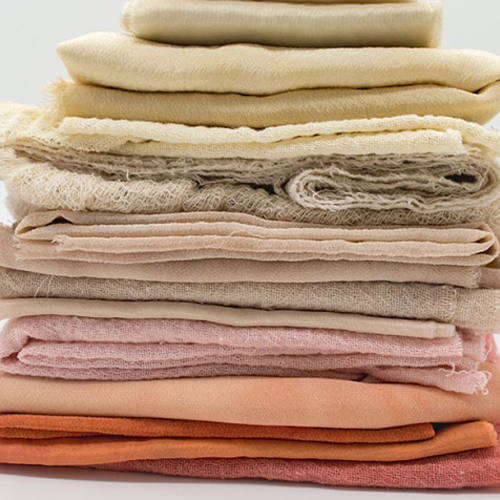
2. Recycled Polyester: A Sustainable Solution for a Cleaner Future
Recycled polyester, a revolutionary fabric derived from post-consumer plastic bottles, has emerged as a sustainable solution that champions environmental responsibility and waste reduction. By giving a new life to discarded plastics, recycled polyester significantly reduces plastic waste and the carbon footprint associated with traditional polyester production. This eco-friendly fabric retains the exceptional properties of conventional polyester, offering consumers a guilt-free choice without compromising on performance. In this article, we will explore the captivating features of recycled polyester, including its origin from post-consumer plastic bottles, its role in reducing plastic waste and carbon emissions, and its ability to retain the qualities that make traditional polyester a beloved and functional fabric.
Produced from Post-Consumer Plastic Bottles: A Transformative Journey
The journey of recycled polyester begins with the collection of post-consumer plastic bottles. Instead of ending up in landfills or polluting the environment, these discarded bottles are gathered and undergo a thorough recycling process. The bottles are cleaned, shredded into tiny flakes, and then melted to form new polyester fibers. This transformative process breathes new life into single-use plastics, extending their utility beyond their initial purpose and reducing the demand for virgin materials.
Reduces Plastic Waste and Carbon Footprint: A Cleaner Future
Recycled polyester stands as a powerful ally in the fight against plastic waste. By recycling post-consumer plastic bottles into fabric, this sustainable alternative reduces the accumulation of plastic waste in landfills, oceans, and natural ecosystems. It addresses a pressing environmental concern by giving discarded plastics a valuable and practical application, preventing them from becoming environmental pollutants.
Moreover, recycled polyester also significantly reduces the carbon footprint associated with traditional polyester production. Conventional polyester manufacturing relies heavily on petroleum-based raw materials, which release greenhouse gases during extraction and processing. In contrast, producing recycled polyester requires significantly less energy and emits fewer greenhouse gases, making it an essential contributor to climate change mitigation.
Retains Properties of Traditional Polyester: A Guilt-Free Choice
Recycled polyester offers all the benefits and functionalities of traditional polyester, ensuring consumers can make sustainable choices without sacrificing performance. It is durable, versatile, and easy to care for, making it a favored fabric for a wide range of applications, including clothing, accessories, and home textiles. Recycled polyester garments exhibit excellent color retention, wrinkle resistance, and moisture-wicking properties, making them ideal for active lifestyles and daily wear.
By choosing recycled polyester, consumers can embrace sustainable fashion without compromising on style or quality, making it a guilt-free and responsible choice for environmentally conscious individuals.
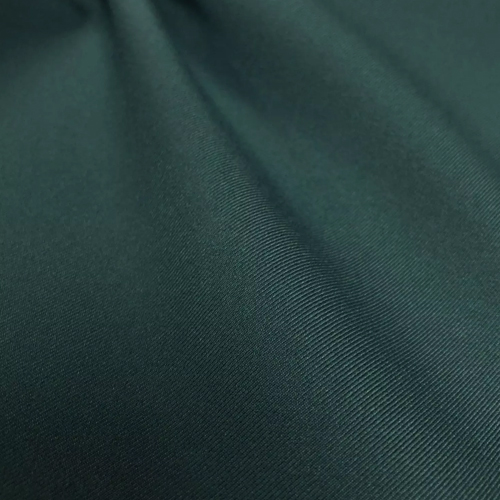
Conclusion
The wide array of fabrics available in garment manufacturing provides designers and manufacturers with endless possibilities to create garments that cater to various needs and preferences. Each fabric type possesses unique characteristics, making it essential to consider factors such as comfort, durability, and environmental impact when selecting the appropriate fabric for a specific garment. By understanding the attributes of different fabrics, fashion professionals can make informed decisions that result in high-quality, stylish, and sustainable clothing. As the fashion industry continues to evolve, embracing new and innovative fabrics will undoubtedly shape the future of garment manufacturing.






Pingback: Advanced Performance Fabrics: A Deep Dive into Sportswear Material Innovation
Pingback: The Ultimate Guide to Starting Your Own Clothing Store: Steps and Tips